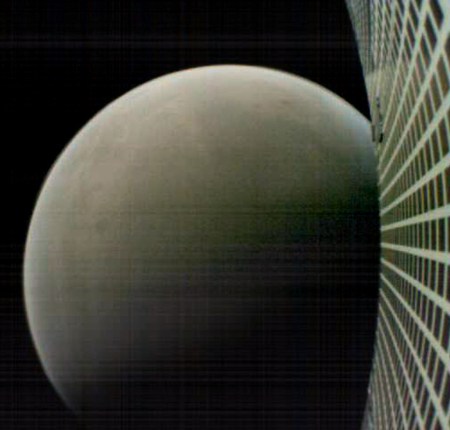The coming dark age: In order to stop global warming a team of scientists plan a first test of a method designed to block sunlight by injecting aerosols (the scientific term for pollution) into the upper atmosphere.
If all goes as planned, the Harvard team will be the first in the world to move solar geoengineering out of the lab and into the stratosphere, with a project called the Stratospheric Controlled Perturbation Experiment (SCoPEx). The first phase — a US$3-million test involving two flights of a steerable balloon 20 kilometres above the southwest United States — could launch as early as the first half of 2019. Once in place, the experiment would release small plumes of calcium carbonate, each of around 100 grams, roughly equivalent to the amount found in an average bottle of off-the-shelf antacid. The balloon would then turn around to observe how the particles disperse.
The test itself is extremely modest. Dai, whose doctoral work over the past four years has involved building a tabletop device to simulate and measure chemical reactions in the stratosphere in advance of the experiment, does not stress about concerns over such research. “I’m studying a chemical substance,” she says. “It’s not like it’s a nuclear bomb.”
Nevertheless, the experiment will be the first to fly under the banner of solar geoengineering. And so it is under intense scrutiny, including from some environmental groups, who say such efforts are a dangerous distraction from addressing the only permanent solution to climate change: reducing greenhouse-gas emissions. The scientific outcome of SCoPEx doesn’t really matter, says Jim Thomas, co-executive director of the ETC Group, an environmental advocacy organization in Val-David, near Montreal, Canada, that opposes geoengineering: “This is as much an experiment in changing social norms and crossing a line as it is a science experiment.” [emphasis mine]
The number of stupid and ill-documented conclusions mentioned in this article are so many it would be hard to list them all. For one, it assumes the climate is warming in a disastrous manner, an assumption that remains entirely unproven. For another, the last paragraph in the quote above illustrates how much politics dominates this scientific field. Science has nothing to do with this experiment.
Third, the risks involved in doing this kind of geoengineering are impossible to measure. They very easily could be very negative, for us and the environment. Fourth, the only objections to this experiment quoted in the article come from activist groups who believe in global warming, but would rather impose political restrictions on freedom and property rights than do geoengineering. Skepticism of the global warming theory is merely mentioned as an aside, coming from “the occasional conspiracy theorist.”
I could go on. The worst part of this article and the scientists proposing this work is their utter refusal to consider the gigantic amounts of research that has shown the many benefits of increased atmospheric carbon dioxide and warming for agriculture and plant growth. Global warming, should it happen, could have negative consequences, but the data so far is very far from conclusive.
Let me add one more side note: The same environmentalists who generally support geoengineering to halt global warming are also likely to agree with this infantile op-ed: Richard Branson and Elon Musk threaten the purity of space.
Despite all the money the US and Russia have spent attempting to show who has the biggest balls, space remains pure. But, while Nasa re-engages and fuels up for another go, so-called space pioneers and entrepreneurs are already selling seats.
I don’t know about you, but I don’t want space to be commercialised, owner [sic] by Richard Branson or Elon Musk. For me, this would ruin something very special.
I’d suggest you read it all, but I would fear your level of education and ability to think will be seriously damaged.
For these anti-human environmentalists, manipulating the Earth’s atmosphere, based on weak scientific theories, is perfectly okay. Having humans and private enterprise in space, however, is evil and must be prevented at all costs.
The empty-headed lack of thought and ignorance required to come to these conclusions, simultaneously, boggles my mind.








